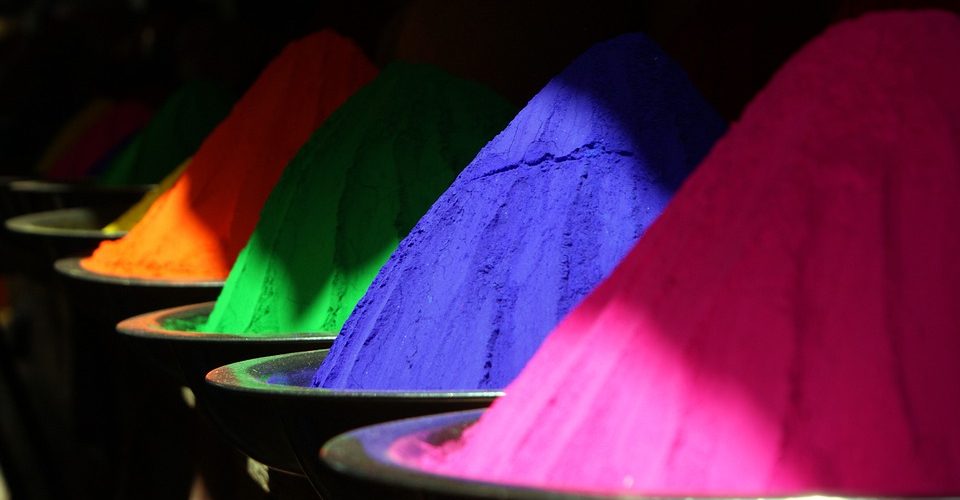What is Powder Bed Fusion?
Powder bed fusion is an additive manufacturing process that uses a powdered raw material. Using the selective application of an energy source, the powdered material is fused together in pre-determined patterns layer by layer. There are several different technologies under this branch of additive manufacturing. Powder bed fusion is best used for rapid prototyping and high-precision designs.
Powder bed fusion is a high-level method for additive manufacturing or 3D printing. It is quite distinct as it is suitable mostly for industrial or commercial applications. What exactly is powder bed fusion and what benefits does it have over other 3D printing methods?
The basics of powder bed fusion
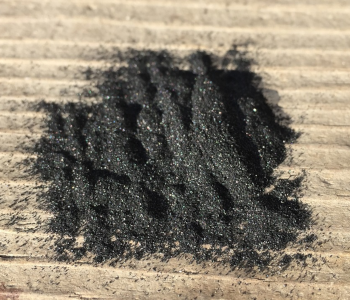
Powder bed fusion (PBF) is just one of many additive manufacturing or 3D printing methods. This means that it is a method to construct an object layer by layer based on a 3D model. PBF has all the usual advantages of all additive manufacturing or 3D printing methods – less waste, more design freedom, and the ability to recreate geometrically complex designs.
As its name implies, the PBF method relies on the fusion of powdered particles of raw material. The materials used for PBF are typically metals, ceramics, or polymers. There is also some variation in the type of heat source used to achieve fusion depending on the objectives of the project. Some technologies are proprietary, limiting which companies are allowed to use them.
To achieve fusion, a source provides enough energy for the powdered particles to fuse together. This requires the use of an automated energy source that can move and target with pinpoint accuracy. There is also another PBF technology that uses a binding agent instead of an energy source to achieve fusion.
PFB as a 3D printing technology is decidedly more complex than methods that use filament or resin. For this reason, PBF 3D printers are typically only used for large businesses, research, or rapid prototyping.
How powder bed fusion works
Although there are different PBF technologies, they work on many of the same principles. The process starts with the creation of a 3D model that will then be sliced by a slicer software. This will divide the 3D model into very thin layers. The shape of these layers will guide the movement of the energy source of the PBF printer.
Another central element of the PBF method is the powder bed. This is the reservoir of material that is selectively fused to create the intended design. After one layer is completed, a hopper deposits a fresh batch of powdered material over the completed layer while a roller spreads the powder in an even coating. This determines the layer thickness for the print. Values of 20 to 100 microns are common in PBF printing.
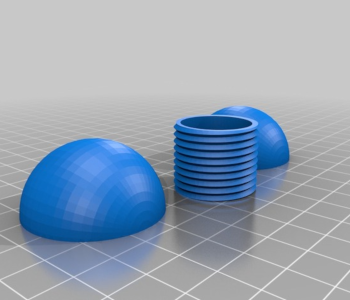
The process is repeated until the 3D model has been printed. During the entire process, the unfused powder remains inside the powder bed. This provides mechanical support to the piece while helping to prevent warping. For this reason, supports are not as essential in PBF printing, although they may still be necessary for some circumstances.
After allowing the part to cool, the unfused powder is removed from the tray to reveal the completed part. Any supports that are anchoring the part to the bed typically have to be removed by cutting or machining, in the case of metal parts. PBF parts typically come out with rough surfaces that have to be smoothed either via chemical treatment, grit blasting, or laser polishing.
Depending on the objectives of the project, there are several other post-processing methods available for PBF-printed parts. Heat treatment can be done to reduce the thermal stress on the material, thus improving its overall mechanical properties. For polymer parts, doing a bead blast removes excess power while also enhancing the surface quality of the finished print.
Different powder bed fusion technologies
While there are lots of different acronyms that refer to different PBF technologies, these can be narrowed down to types of energy sources – laser beams and electron beams. The third type, Multi Jet Fusion, achieves fusion in a completely different manner.
- Selective Laser Sintering (SLS) is a process that achieves fusion by the use of a laser beam energy source. An important factor to take note of here is that the powders are sintered, not melted. Sintering indicates the surface-level fusion of powdered materials without them undergoing melting. Sintering requires less energy, produces parts that have more void sections, and is suitable for projects with a low tolerance for measurement inaccuracies.
- Selective Laser Melting (SLM) is almost exactly like SLM, except that it uses a laser beam energy source to achieve complete melting for the material. SLM is a process that is more commonly applied to metal powders. The build chamber of SLM printers is typically filled with an inert gas like argon to prevent the oxidization of metals.
- Direct Metal Laser Sintering (DMLS) is simply an alternative term for SLM but is trademarked by another company. DMLS achieves melting of the powdered material, contrary to the term ‘sintering’ being included in the trademark.
- Electron Beam Melting (EBM) is a PBF process that uses an electron beam instead of a laser beam as an energy source. Instead of a chamber with inert gas, a vacuumed chamber is needed for EBM. Heat treatment may not be necessary for EBM because of the elevated temperatures, but surface finishing and support removal are still crucial.
- Multi Jet Fusion (MJF) is the least common and most different type of PBF manufacturing. It can even be argued that MJF is not a type of PBF at all. MJF uses a detailing agent injected via an array of ultra-fine nozzles that seeps into the spaces between the powdered material. An infrared light then passes over the layer of powder, energy from which is absorbed optimally because of the detailing agent.
Benefits and drawbacks of powder bed fusion
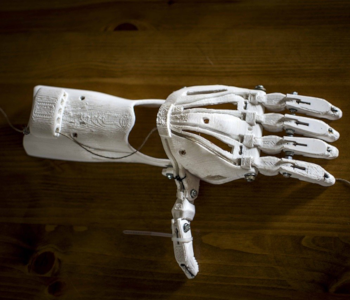
PBF is one of the more sophisticated additive manufacturing or 3D printing technologies. It may not be suitable for recreational use, but it has become a mainstay in the automobile, aerospace, and medical industries. What is it about PBF that makes it appealing for high-end applications?
Less waste
Compared to a subtractive manufacturing method, an additive method like PBF invariably generates much less waste. This is mainly because no material needs to be trimmed away from a solid block, as with lathing or milling. Not only does this reduce the costs associated with the materials, but also with waste disposal.
Flexibility
PBF provides manufacturing flexibility in two ways – it allows for geometrically complex designs, and for rapidly switching manufacturing lines from one design to another. This is ideal for industries that have high design demands but a relatively low volume of orders, such as the medical or dental industries.
The design flexibility of PBF also makes it the perfect technology for rapid prototyping. 3D models can be produced quickly, demonstrated, and revised much faster than they would if new molds and casts had to be made every design revision cycle. This greatly speeds up the process of product development.
High strength-to-weight ratio
Sintering is a unique outcome that is made possible by the technology of PBF. When metals are sintered, they produce coherently solid builds that are strong but have a substantial void fraction. This is a great technique for designing strong metal parts that are also lightweight. That said, parts made via casting or molding will still be stronger than sintered parts.
Good resolution
When compared to other 3D printing methods, PBF displays superior resolution, making it the preferred method for high-precision parts. For this reason, PBF has become the go-to method to address the manufacturing needs of the medical industry for prostheses and implants. The automobile industry has also greatly benefited from the detail accuracy of PBF-printed parts.
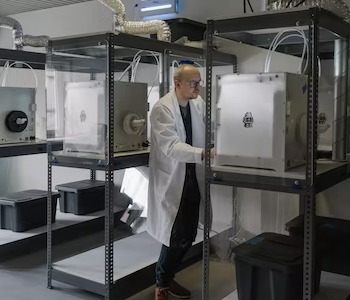
Despite the benefits, PBF has a fairly low rate of adoption. It is a highly specialized manufacturing method that is best used in circumstances that leverage its strengths. Otherwise, these drawbacks may prove to be more of a liability:
High power requirements
The PBF process relies on the use of a high-intensity power source like a laser beam or electron beam. A project that could require several hours of printing time will also be using a hefty amount of power. In terms of operating costs, PBF can be a bit more expensive than other additive manufacturing methods
Work-intensive post-processing
Post-processing is pretty much a necessary step in PBF. Supports have to be machined off, the excess powder needs to be removed, and the surface has to be sanded. Most of the post-processing steps need specialized equipment, making PBF even more inaccessible to all but the most equipped facilities.
Relatively slow
Compared to other additive manufacturing methods, PBF is relatively slow. The laser beam or electron beam has to traverse the entire area of each layer to ensure proper powder fusion, unlike 3D printing methods that only require exposure to UV light. Rapid prototyping with PBF may not be so rapid, after all. Fortunately, the unique workflow of MJF addresses this problem.
Expensive
Running PBF operations requires more than just the PBF equipment – you will need cutting machines, laser polishers, chemical baths, and other specialized industrial hardware. This technology is very expensive and skills-intensive. The training, capital costs, and operating costs associated with PBF are likely the primary reasons for its low rate of adoption.
The list of pros and cons of PBF points to one conclusion – it is a highly specialized additive manufacturing method that can only be realistically done by a large, well-funded facility. This isn’t necessarily a bad thing but merely highlights its difference from the more mainstream 3D printing methods, like FDM or SLA.
Final thoughts
PBF is a type of additive manufacturing or 3D printing that relies on the fusion of powdered material by a power source, typically a laser beam or electron beam. It is an incredibly accurate 3D printing method that has made it a favorite for industries that rely on high-reliability manufacturing.
Compared to other 3D printing technologies, PBF is a lot less common. This can be associated with the high costs of specialized equipment and operations of a PBF setup. This is not the kind of 3D printing technology that we will be seeing in garage workshops anytime soon.

